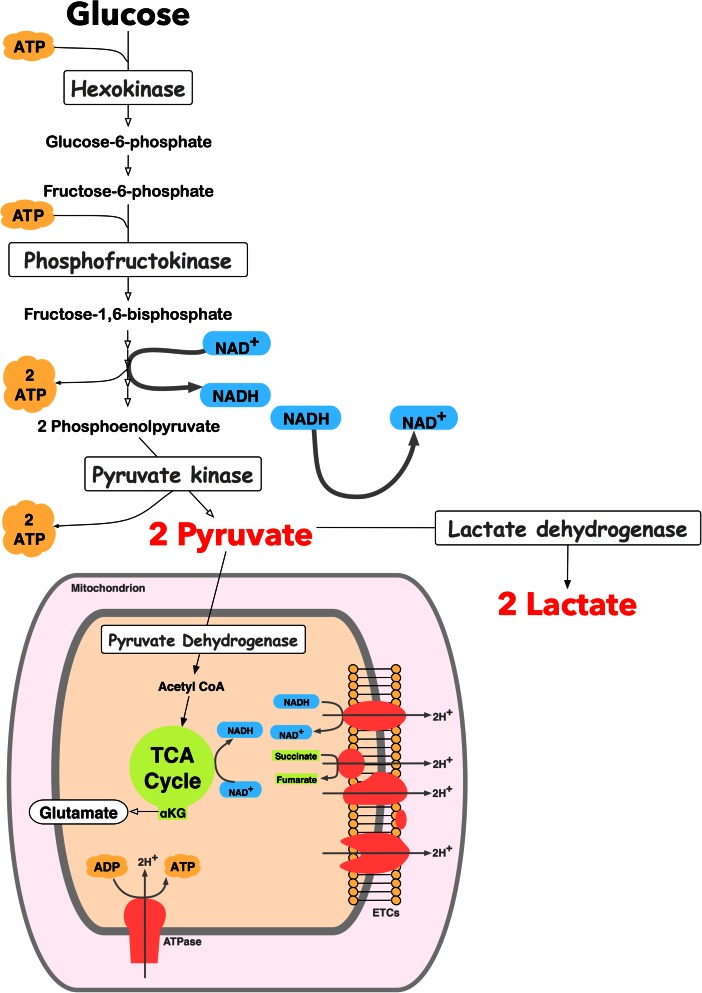Fig. 2.
Glycolysis and the tricarboxylic acid cycle: Glucose is the preferred substrate for the brain, although the brain can take up lactate, other monocarboxylic acids and ketone bodies under certain circumstances, for example, during the perinatal period. Once it enters cells, glucose is metabolised through glycolysis to pyruvate. Glycolysis (also termed Embden-Meyerhof pathway) is the series of reactions that results in the breakdown of glucose, generating pyruvate, adenosine triphosphate (ATP) and nicotinamide adenine dinucleotide (NADH). It is a truly fundamental pathway, found throughout nature and proceeds without the need for oxygen. The ten key enzymatic steps, in which 2 ATP molecules are consumed early on but then paid back later with the generation of 4 ATP molecules per glucose molecule, so the net production of ATP is 2 molecules per molecule of glucose, takes place in the cytoplasm. There are three key regulatory points catalysed by the enzymes hexokinase, phosphofructokinase, and pyruvate kinase. These reactions are essentially irreversible whereas the other enzymatic steps exist in equilibrium. Pyruvate is converted to acetyl CoA, which enters the tricarboxylic acid (TCA) cycle, within mitochondria. The TCA cycle results in the transfer of electrons (from NADH and succinate), to electron transport chains (ETC.) located in the inner mitochondrial membrane, which ultimately deposit on oxygen molecules. Thus the TCA cycle generates carbon dioxide (also generated by the pyruvate dehydrogenase step prior to TCA cycle) and the ETC generates water. The ETCs pump protons across the inner mitochondrial membrane, maintaining a gradient of protons across the membrane. Protons then flow down their concentration gradient, through ATP synthetases (ATPase), resulting in the generation of ATP, the cells’ widely used energy currency. Energy production from glucose is intrinsically related to neurotransmission. Glutamate spins off the TCA cycle from α-ketoglutarate (αKG), an intermediate of the TCA cycle. Glutamate can be converted reversibly into glutamine. Glutamate can also be converted into gamma-aminobutyric acid (GABA). There is a constant cycle of glutamate released during neurotransmission, retrieved from synaptic junctions by astrocytes and returned to neurons as glutamine

